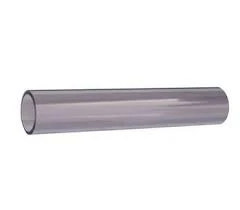Dec . 05, 2024 14:09 Back to list
PPR Pipes and Fittings Guide for Efficient Plumbing Solutions and Installation Techniques
Understanding PPR Pipes and Fittings A Comprehensive Overview
PPR pipes and fittings, made from Polypropylene Random Copolymer, have garnered widespread popularity in plumbing and heating applications due to their distinct advantages, including durability, resistance to corrosion, and ease of installation. These features make PPR an ideal choice for both residential and commercial buildings, as well as for industrial applications.
What is PPR?
PPR is a type of thermoplastic polymer characterized by its random polymer structure, which improves its flexibility and thermal stability. This innovation allows PPR pipes to withstand high temperatures and pressures, making them suitable for hot and cold water supply systems. PPR pipes are also lightweight compared to traditional materials like copper or steel, making them easier to handle and install.
Key Benefits of PPR Pipes and Fittings
1. Durability PPR pipes are highly resistant to wear, tear, and corrosion. Unlike metal pipes, they do not rust or corrode over time, which significantly increases their lifespan. They can last for over 50 years under normal conditions.
2. Temperature Resistance PPR pipes can handle high temperatures, often up to 95°C (203°F), which makes them suitable for both hot water systems and heating applications. This feature ensures that they maintain their integrity even under extreme thermal conditions.
3. Chemical Resistance These pipes exhibit excellent resistance to a wide range of chemicals and do not react with the substances they transport, ensuring safe and reliable water supply for drinking, heating, and industrial purposes.
4. Eco-Friendly PPR is a recyclable material, making it a more environmentally friendly option compared to some traditional plastics and metals. The production of PPR pipes also consumes less energy, contributing to lower carbon emissions.
5. Cost-Effective The installation and maintenance costs of PPR pipes are generally lower than that of metal pipes, as their lightweight nature allows for more straightforward handling and installation. Additionally, their durability means less frequent replacements.
6. Jointing Techniques PPR fittings enable various jointing techniques, such as heat fusion, which creates a seamless bond and eliminates the risk of leaks common with threaded connections. This results in a reliable and long-lasting plumbing system.
ppr pipes and fittings

Applications of PPR Pipes
PPR pipes are versatile and find applications in various fields
- Residential Plumbing Ideal for plumbing systems involving cold and hot water supply, PPR pipes are prevalent in kitchens, bathrooms, and heating installations.
- Industrial Applications Their resistance to chemicals makes PPR pipes suitable for industries that require the transportation of aggressive fluids and additives.
- Irrigation Systems PPR pipes are widely used in agricultural settings due to their robustness and resistance to environmental factors, ensuring a reliable irrigation process.
- Renewable Energy PPR pipes are also utilized in geothermal heating systems and solar energy applications, where they can efficiently transfer heat.
Installation Process
Installing PPR pipes requires specific tools and techniques, primarily heat fusion welding. The process involves heating the pipe and the fitting simultaneously, then joining them together to create a solid bond. This method ensures leak-proof connections and enhances the overall reliability of the plumbing system. Additionally, the installation process is faster and requires less labor compared to traditional piping systems.
Conclusion
In conclusion, PPR pipes and fittings represent a modern solution for plumbing and heating needs, providing an array of benefits that surpass traditional materials. Their durability, temperature and chemical resistance, environmental friendliness, and cost-effectiveness make them an excellent choice for various applications. As the demand for efficient and sustainable plumbing systems continues to rise, the popularity of PPR pipes is likely to grow, solidifying their role as a preferred material in urban development and infrastructure projects. Overall, investing in PPR pipes and fittings is a smart choice for those seeking reliability and longevity in their plumbing systems.
-
Durable PP Rigid Sheet: Lightweight, Chemical Resistant Solutions
NewsAug.21,2025
-
PVC Grey Sheet for Extraction: Chemical Resistant & Durable
NewsAug.19,2025
-
Durable PVC Pipe Fittings for Plumbing & Irrigation Needs
NewsAug.18,2025
-
HDPE Steel Belt Reinforced Spiral Corrugated Pipe | High Strength
NewsAug.17,2025
-
HDPE Pipe Fittings: Durable, Leak-Proof Solutions
NewsAug.16,2025
-
Premium CPVC Sheet: High-Temp & Chemical Resistant Solutions
NewsAug.15,2025

